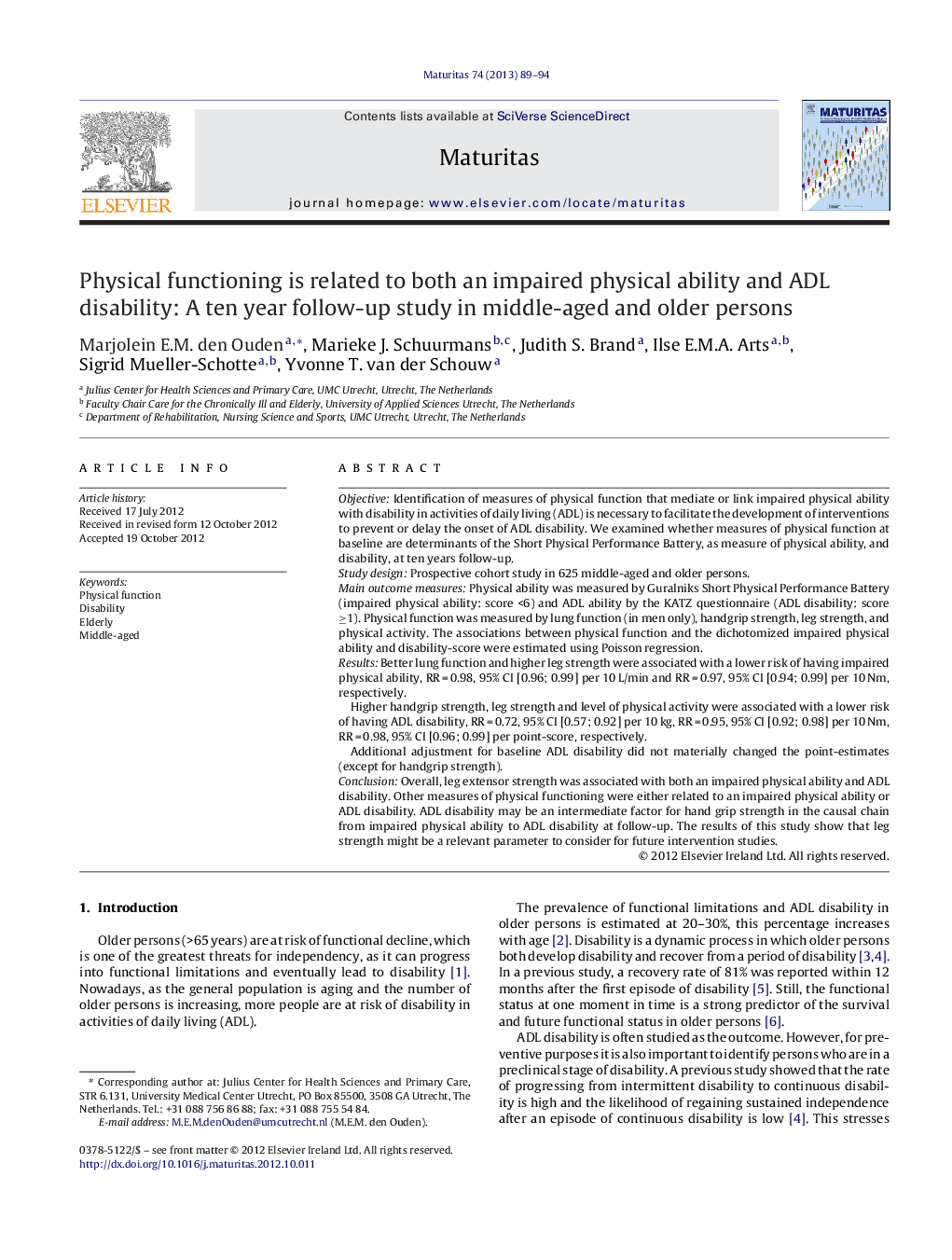| Article ID | Journal | Published Year | Pages | File Type |
|---|---|---|---|---|
| 1917364 | Maturitas | 2013 | 6 Pages |
ObjectiveIdentification of measures of physical function that mediate or link impaired physical ability with disability in activities of daily living (ADL) is necessary to facilitate the development of interventions to prevent or delay the onset of ADL disability. We examined whether measures of physical function at baseline are determinants of the Short Physical Performance Battery, as measure of physical ability, and disability, at ten years follow-up.Study designProspective cohort study in 625 middle-aged and older persons.Main outcome measuresPhysical ability was measured by Guralniks Short Physical Performance Battery (impaired physical ability: score <6) and ADL ability by the KATZ questionnaire (ADL disability: score ≥1). Physical function was measured by lung function (in men only), handgrip strength, leg strength, and physical activity. The associations between physical function and the dichotomized impaired physical ability and disability-score were estimated using Poisson regression.ResultsBetter lung function and higher leg strength were associated with a lower risk of having impaired physical ability, RR = 0.98, 95% CI [0.96; 0.99] per 10 L/min and RR = 0.97, 95% CI [0.94; 0.99] per 10 Nm, respectively.Higher handgrip strength, leg strength and level of physical activity were associated with a lower risk of having ADL disability, RR = 0.72, 95% CI [0.57; 0.92] per 10 kg, RR = 0.95, 95% CI [0.92; 0.98] per 10 Nm, RR = 0.98, 95% CI [0.96; 0.99] per point-score, respectively.Additional adjustment for baseline ADL disability did not materially changed the point-estimates (except for handgrip strength).ConclusionOverall, leg extensor strength was associated with both an impaired physical ability and ADL disability. Other measures of physical functioning were either related to an impaired physical ability or ADL disability. ADL disability may be an intermediate factor for hand grip strength in the causal chain from impaired physical ability to ADL disability at follow-up. The results of this study show that leg strength might be a relevant parameter to consider for future intervention studies.
